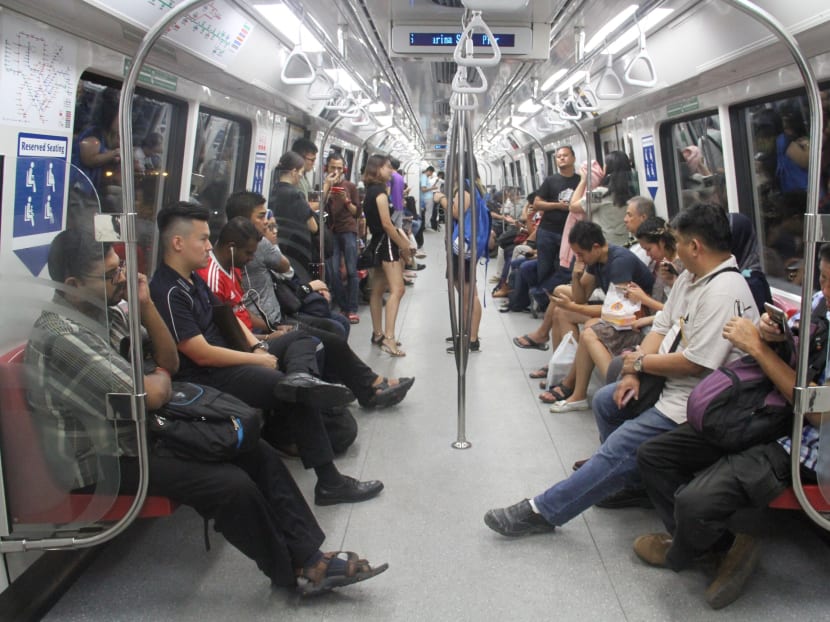Social distancing needed on buses and trains, too
In view of the Covid-19 pandemic, the Government has introduced urgent social distancing measures, with large-scale events suspended, and hawker centres, restaurants and entertainment venues keeping patrons away from one another.

The writer says that with seats on MRT trains being close to one another, it is likely that commuters would meet someone who is unwell.
In view of the Covid-19 pandemic, the Government has introduced urgent social distancing measures, with large-scale events suspended, and hawker centres, restaurants and entertainment venues keeping patrons away from one another.
While these measures can help slow the spread of the disease, another vital step is to reduce contact on our public transport system.
Every day, millions in Singapore use the MRT and buses to get to their destinations.
Living with a chronic condition that compromises my immune system, I fear travelling in trains and buses. But I have to take public transport to work.
With seats on buses and trains being close to or facing one another, it is likely that we would meet someone who is sick and who has not sought medical attention.
The situation is more pronounced on trains, where people stand very close to one another, especially during peak hours. I have noticed people coughing and sneezing without having masks on, and touching their faces. This adds to my anxiety.
The authorities have recommended that where remote work is not feasible, firms should stagger their employees’ working hours. The start and end of their workdays should also not coincide with peak-hour travel, especially if their workers use public transport.
Will the authorities consider extra measures by taping off some seats in public buses and on the MRT, as has been done in hawker centres and some food-and-beverage establishments?
There could also be similar separation for standing passengers, and those waiting to board trains and buses.
Public transport commutes are within confined and air-conditioned spaces. As such, the likelihood of spreading germs is much higher than at open-air hawker centres, for example.
We should try to reduce interactions. That means cutting the number of commuters on public transport as well as non-essential and non-critical members of the workforce who travel to work.
This could mean introducing mandatory work-from-home schemes for the next few weeks, as is done by firms in countries such as the United Kingdom and South Korea.
If we do not put in place further social distancing, the arduous efforts rolled out so far could go to waste.
Let us look out for one another with care and thoughtfulness.
Have views on this issue or a news topic you care about? Send your letter to voices [at] mediacorp.com.sg with your full name, address and phone number.






